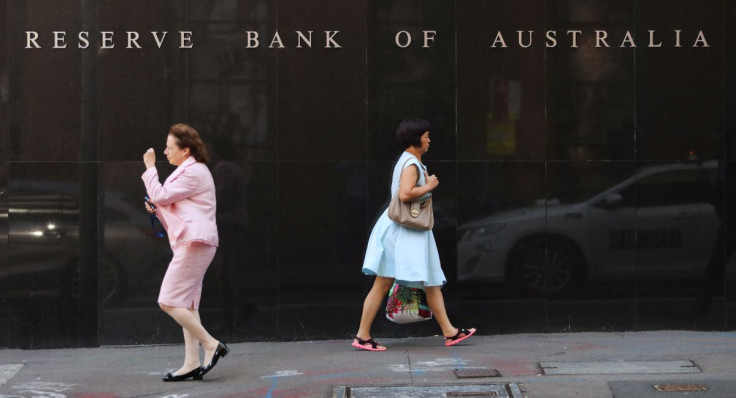Australian Banks Gravitate To June For Rate Rise, Ultimate Peak Unclear

Most of Australia's major banks now expect a rise in interest rates as early as June, though opinions on the pace of tightening and the peak point still vary widely.
The first hike in a decade is clearly on the cards after the Reserve Bank of Australia (RBA) on Tuesday surprised many by dropping a pledge to be patient on policy.
"We now expect the RBA to lift the cash rate by 15 basis points in June, previously September, with follow-up 25 basis point rate hikes in July and August," said analysts at ANZ. The cash rate is currently at a pandemic-era low of 0.1%.
Economists at NAB also now look for a move in June, while CBA has been tipping it for some time. Bill Evans, chief economist at Westpac, chose to hedge his bets.
"There has been a major change in the rhetoric and the Board has now increased its flexibility to start raising rates as early as June, two months earlier than our current call which remains August," he said.
A move at the RBA's May 3 policy meeting has been considered unlikely because key data on wages is not due until May 18 and a federal election is set to be held sometime in the month.
Markets have been wagering on a June hike for months, in part reflecting hawkish pivots by the U.S. Federal Reserve and many other major central banks.
Indeed, futures imply a real risk the RBA could hike all the way to 0.5% in one go. That would be a radical departure for the central bank which has not hiked by more than 25 basis points since early 2000.
Markets have also priced in a series of rapid-fire increases to at least 1.75% by year end, and to 3.25% by late 2023.
Such a drastic tightening would again be out of character for the RBA.
"A lift in the cash rate to 3.25% over the next two years would be both higher and importantly much steeper than all cycles in the post 1993 inflation targeting era," noted Tapas Strickland, a director of economics at NAB.
A major reason for restraint is households' record high debt levels, which would see interest payments swallow a punishingly large share of income should rates rise so precipitously.
"The Australian household sector is one of the most indebted in the world," cautions Gareth Aird, head of Australian economics at CBA. "This means hikes have a more powerful impact on our household sector than they do in almost all other jurisdictions."
As a result, he believes the neutral level for rates is as low as 1.25% and expects the RBA to reach that by early 2023 and stay there for the rest of that year.
David Plank, head of Australian economics at ANZ, looks for rates to peak somewhere above 3% but for the cycle to be much more drawn out than implied by the market.
"We expect to see a steady tightening pace ahead, with lots of pauses, which could extend the cycle for a number of years," said Plank. "These pauses essentially allow the economy to adjust to a higher level of rates."
© Copyright Thomson Reuters 2024. All rights reserved.




















